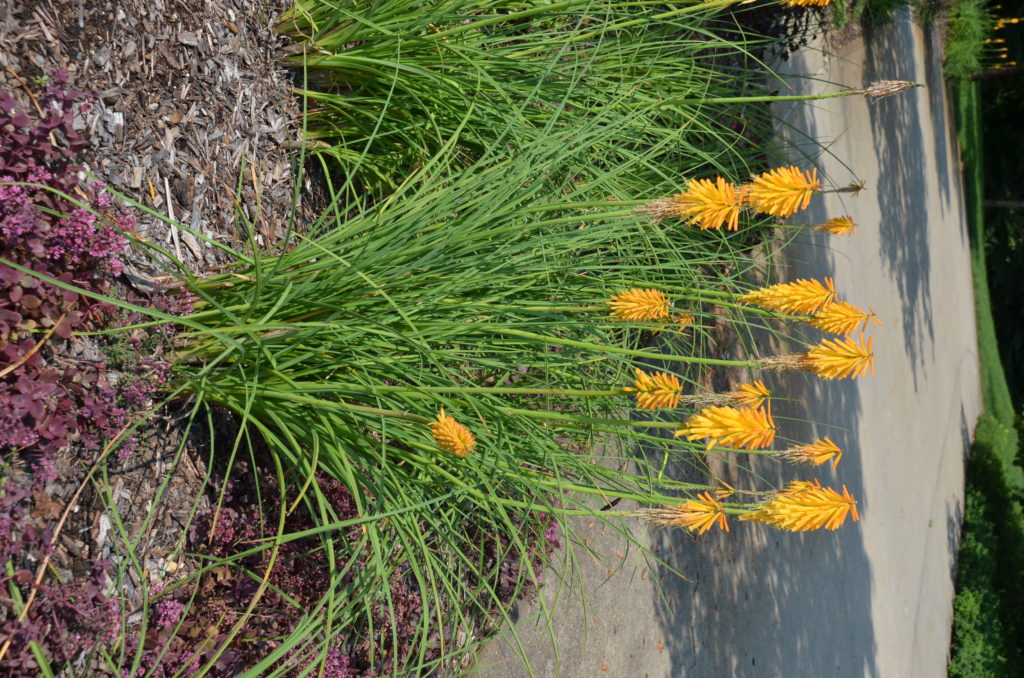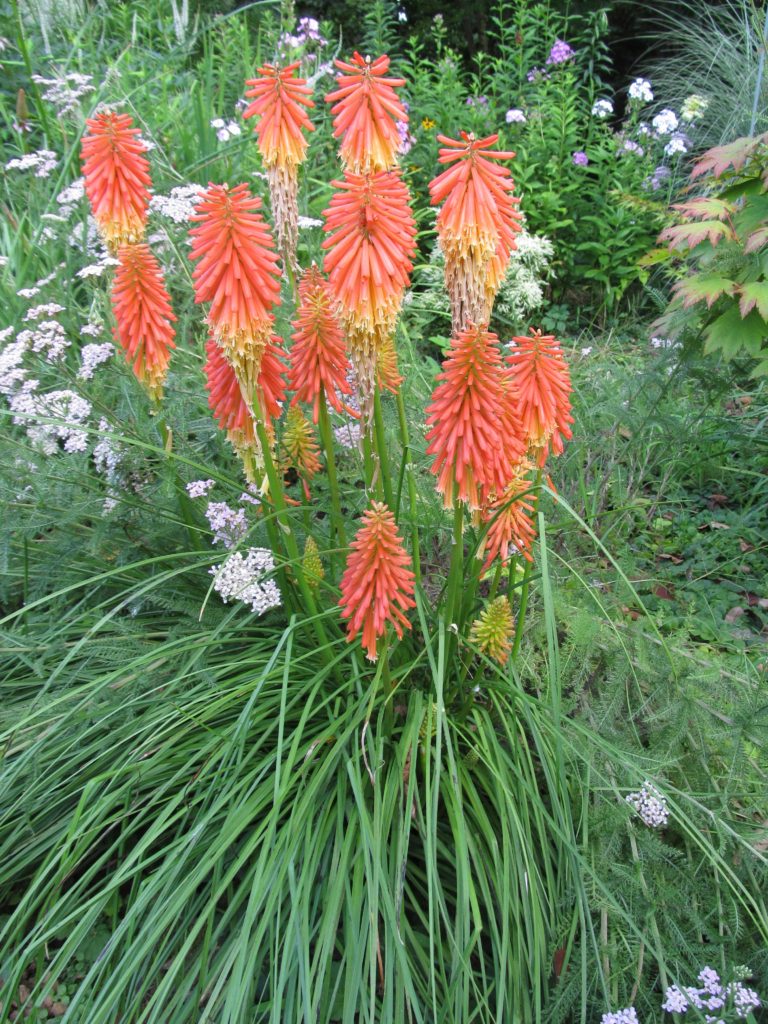Torch lilies (Kniphofia spp.) are easy to grow long-lived perennials from South Africa that are remarkably (USDA hardiness zones 5-9). They go by a number of common names including red hot poker and tritoma. The colorful floral spikes (and a little imagination) resemble fiery torches or sizzling pokers, visited often by hummingbirds, bees and butterflies.

New cultivars are mostly hybrids and vary in plant height and flower color. One or more floral spikes arise 18 inches to 4 feet in height, depending on the cultivar(s) planted. Color choices include off-whites, yellows, oranges, reds, and blends of two or more tints. From May thru October additional re-blooming follows soon after the spent floral scapes have been pruned off (deadheaded).
Torch lily excels when planted in average well-drained soil. Full to partial (6 hours minimum) sunlight is ideal. Most, but not all, cultivars are cold hardy in the Southern Appalachian region (USDA zones 6 and 7). The sharp edged grass-like foliage is evergreen and tends to take a beating in rough winters. Prune back the entire plant near the soil line in late winter for a fresh start.

Modern varieties tend to grow shorter (under 20 inches) compared to the species, K. uvaria, which grows 3 feet and higher. Terra Nova Nurseries, an Oregon wholesale nursery, offers two series of dwarf Kniphofia that are bred for the both the container and perennial garden market. The Poco® series has 4 color variations and the Popsicle® series comes in 7 hues. Late blooming ‘Fire Glow’ is a lovely 14-inch dwarf Kniphofia with large bi-color orange and red flower spikes that flower later from August to October. The Echo® Series, offered by Itsaul Nursery in Atlanta Georgia, grow 30-48 inches high, depending on cultivar. Echo Duo (
reddish-orange), Echo Mango (apricot), and Echo Rojo (orange-creme) are popular choices.
A 2-year and older plant clump is both heat and drought tolerant. Every 3-4 years rhizomes are dug and divided either in early fall or late winter. Torch lily has few serious disease and insect problems. Root rot may become a significant problem when planted in a poorly drained soil.

 Posted in
Posted in 
